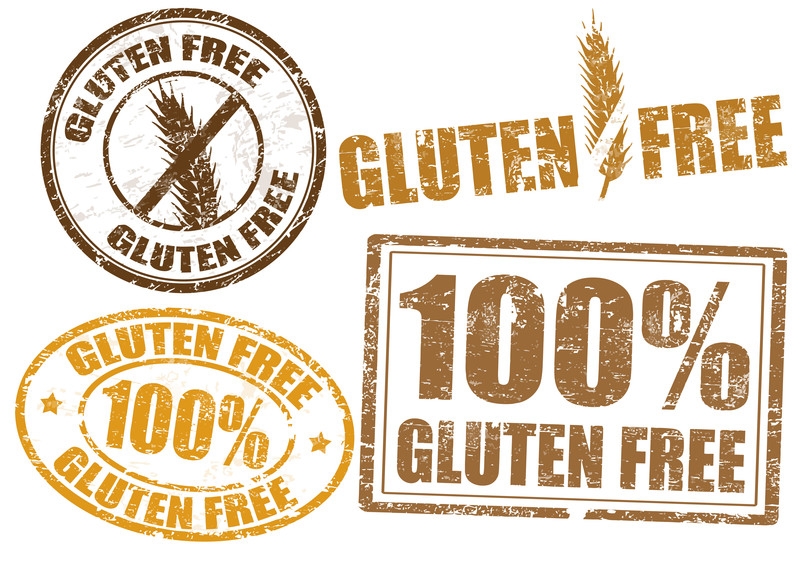You may have noticed the ever-increasing trend of being on a gluten free diet. Grocery stores are starting to sell gluten free products and restaurants are advertising gluten free menus. But why is it suddenly popping up? Is it just a fad? What does it even mean? Here is some clarity on the Gluten-Free Phenomenon.
What is Gluten, and what’s the big deal?
Gluten is a protein usually associated with wheat, but can also be found in some other grains such as: barley, rye, and malts. Therefore it is found in bread, beer, cakes, pasta and anything else made with these grains. It is also sneaked into a lot of processed foods in the form of flavoring and thickening agents. 70% of the average American’s diet is made up of grains and processed foods.
Most recently, medical professionals have started to become aware of a population of people who have celiac disease and gluten intolerance. Both gluten intolerance and celiac disease are allergies to gluten. Gluten intolerance is at the minor end of the scale of allergic reaction, whereas celiac disease is a lot more serious. Though only a very small percentage of the US population have these conditions, (1% have celiac disease and 6% have gluten intolerance), it has been found that 95% of these people are currently undiagnosed. That means 2,850,000 people don’t know they need to be completely gluten free, making it the most undiagnosed disorder in the country. This large undiagnosed population is leading more and more people with minor health problems to “test the waters” to see if it helps them feel better.
There are also many people, such as Paleo enthusiasts, who believe that this allergy disorder has come about because humans are not meant to eat grains at all. This is what the Gluten-Free trend stems from.
To learn more about Paleo read: Paleo Diet Breakdown – Simple enough for a Caveman to Understand.
The Difference between Gluten Intolerance and Celiac Disease
Gluten intolerance often has a slower onset, whereas Celiac disease is a severe sudden onset allergic reaction to gluten. Celiac causes inflammation and deterioration of the inner lining of the small intestine, which leads to the malabsorption of minerals and nutrients into the bloodstream, and therefore malnutrition of the body. First signs of the disease usually occur at infancy, but it can come up in genetically predisposed people of all ages. Some people with celiac disease may not have symptoms at all, but constant malnutrition will slowly deteriorate health.
Signs & Symptoms
Signs and symptoms of celiac disease may range from none to severe. Many adults have such subtle symptoms that it may not even occur to them that there is a severe problem. These subtle symptoms include: fatigue, migraines, and digestion discomfort such as bloating, cramps, stomach rumbling, and excess gas.
Other symptoms of gluten intolerance and celiac disease are:
- Weight loss or weight gain
- Low iron levels/anemia
- Constipation or diarrhea
- Fat in the stools (due to poor digestion)
- Persistent hunger
- Fluid retention
- Bone and joint pain
- Depression
- Eczema
- General Weakness/Fatigue/Exhaustion
- Mood swings
- Infertility, irregular menstrual cycle and miscarriage
- Slow development and growth of children
- Dental health problems
- Muscle weakness and cramps
- Nausea and vomiting
- Nerve damage (tingling in the legs and feet)
- Nose bleeds
- Osteoporosis
- Panic Attacks
- Red urine
- Unhealthy pale appearance
- Vertigo
- Vitamin deficiencies (e.g.: B12, D, and K)
- Lactose intolerance
If you have symptoms of these conditions, you may want to log everything you eat along with how you feel within 2 hours after consuming food. Try one week with gluten products and one week without, and if you notice a positive change when off gluten, you should go to your doctor and get tested for celiac disease. DO NOT just continue a gluten free diet without getting tested. Allowing Celiac to go undiagnosed can lead to more serious conditions like thyroid disease, diabetes and cancer. Celiac Disease can be confirmed with a blood test and a biopsy of the small intestine. They are currently still looking for a way to test for gluten intolerance.
Causes
The truth is, it’s still not really known. Because celiac disease and gluten intolerance affects people in such a large variety of ways it is hard to determine what exactly triggers it. However, it has been found that both conditions can worsen with stress, infection, surgery, pregnancy and childbirth.
Treatment
There is no cure for Celiac Disease or gluten intolerance, and the only treatment is a gluten free diet. Complete absence of gluten will allow the intestines to heal, leading to the end of all symptoms in most cases.
Reasons to Go Gluten Free, if you don’t have an allergy…
A gluten-free diet isn’t just for those with allergies. It has been found that humans, in general have a hard time digesting wheat. Wheat is also a pro-inflammatory agent. Chronic inflammation is linked to arthritis, allergies, asthma, cardiovascular disease, bone loss, and cancer. Though not everyone who tries the diet notices benefits, going gluten free has been claimed to promote weight loss, better sleep, less brain fog, improving athletic performance, and alleviating minor medical conditions.
How to Go Gluten Free
The easy part is staying away from anything that contains wheat, rye and barley. Though oats have not been confirmed to contain gluten, it is advised to stay away from them because some oat preparations can be contaminated with wheat. Other grains such as corn, rice, quinoa and buckwheat are safe to consume.
The problem with going gluten free is that gluten is a sneaky bugger. If you have been officially diagnosed with celiac, it is recommend seeing a nutritionist in order to help you determine what is safe and what is not. Some hidden sources of gluten are: soy sauce, hot dogs and sausages, some ice creams, caramel flavorings, foods seasoned with MSG, canned soups, and instant coffee.
Gluten can also be found in some medications, vitamins, lipsticks, toothpaste and even the adhesive on envelopes!
There is a growing variety of products on the market labeled gluten free, though these products supposedly contain a “harmless level” of gluten as oppose to being completely free of it. The exact level at which gluten is harmless is uncertain and controversial and the regulation of the label gluten free varies from country to country.
People also need to know that most gluten free products are much higher in calories due to the extra fat and sugar put in them to make them taste better. It is highly encouraged to read all product labels to make sure you know exactly what you’re getting.
The best and easiest way to go gluten free is to stick to a diet of meat and/or fresh produce. If you are having any of the above mentioned symptoms or don’t feel well in general, there is no harm in trying to see if a gluten free diet makes you feel better. Whether you are gluten intolerant or not, a diet rich in fresh foods is much better for you, in any case.
Give it a try. It may just change your life.
Resources: Vancouver Sun. Medical News Today, newhope360.com





 Payments powered by:
Payments powered by:

